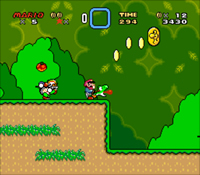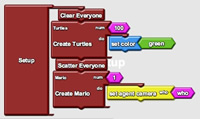Creating Games for Education - A Three-Day Workshop
Ruben R. Puentedura, Ph.D.
2006 NMC Summer Conference
Case Western Reserve University, Cleveland, OH
Day 1: An applied theory of games and their design
The first day provides participants with the analytical framework needed to build educational games. Classical games will be played by participants, who will then have a chance to dissect them, using their newly-gained analytical skills.
Morning:
- What is a (good) game?
- The parallels between good games and good teaching.
- A taxonomy of games for educators.
- Learning from the Masters, Part I: what classic games can teach us.
Afternoon:
- Design Patterns for Games, Part I: the patterns introduced.
- Exercise 1: analyzing games for design patterns.
- Storytelling and narrative techniques for games.
- Learning from the Masters, Part II: games that tell a story.
Day 2: Designing the game
The second day shifts focus from game analysis to game creation. After creating a simple practice game, teams of participants devote the afternoon to the design and paper implementation of a game of their own choosing. Care will be taken to keep these projects within parameters that can reasonably be achieved in the time allotted, and that can be translated into videogame code on the third day.
Morning:
- A workflow for game design.
- Design Patterns for Games, Part II: using the patterns in design.
- Understanding the player: (just enough) game theory.
- Exercise 2: designing a simple social game.
Afternoon:
- Exercise 3: designing your game.
- Selecting a topic, scope, and mode.
- Building the paper prototype.
- Playing the prototype.
- Debugging the game.
Day 3: Implementing the game
The third day is dedicated to the translation of the two paper games from day 2 into working prototype code. The environment chosen - StarLogo TNG - is powerful enough to implement prototype games, yet simple enough that game designers without a programming background can pick up its fundamentals quickly. The finished games will be presented by participants in a special session during the NMC Summer Conference.
Morning:
- Games and Rapid Prototyping tools.
- Learning a Rapid Prototyping tool: StarLogo TNG.
- Basic features.
- Translating paper logic into videogame logic.
- Exercise 4: implementing a simple social game.
Afternoon:
- Exercise 5: implementing your game.
- Designing an implementation workflow.
- Implementing - and testing - the parts.
- Implementing - and testing - the whole.
- Epilogue: how do you know when you've succeeded?









